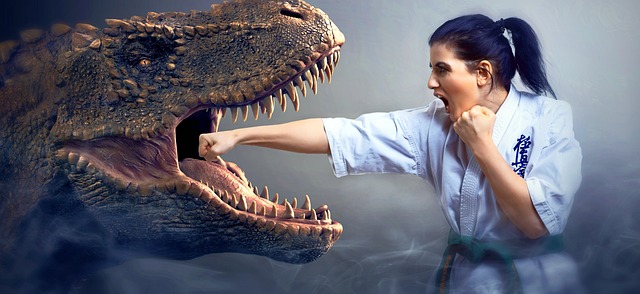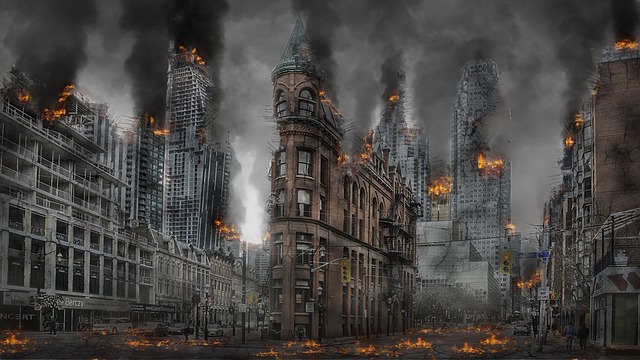No matter how many monstrous creatures, villains or plagues we create in our imaginations, they are first and foremost reflections of what we most fear about society. Our evolving world might influence their shape and form over time, but they are still metaphors for our collective fears. Thus the 1830s folklore of ‘Spring-Heeled Jack’ personified the frightening urban world of Victorian industrialisation, the 1954 film Godzilla represented the alarming power of nuclear power and radiation, and ‘Big Brother’ from George Orwell’s 1949 novel Nineteen Eighty-Four embodied fears of World War II totalitarianism and what that said of us as humans. With each monstrous story, we can thus find an opportunity to reflect on what monsters might tell us about our societies.
Such stories also allow us to ask valuable questions about the real world, such as:
- Where might we find hope when all else fails?
- Which values might we seek to retain through a crisis, and which would we relinquish?
- At what cost would we protect what we cherish, and to what aim?
- After the societal breakdown that inevitably follows the impact of a significant ‘monster’ – be it a single entity, invasion or plague – how might we find our way back to a civilised existence?
At a recent writers’ festival, I was asked about the world of Palude I created for When Dark Roots Hunt, and particularly its giant water-ants and carnivorous wyann trees.
In the real world, ants seem to follow me everywhere, even nipping on my shoulder in the shower and biting my leg on planes! If I were truly the focus of their hunt, I would be terrified by how well they mobilise en masse – a worthy villain. Reminiscent, perhaps, of human armies and their relentless endurance.
As for trees, although I absolutely adore being in nature, trees are intimidatingly long-living and impenetrable, with long roots reaching far out of sight – what if those long-living, impenetrable roots also reached for us? In such a world, how would we live? Would we bend it to our will, or succumb to its might? Is this a metaphor for our increasingly contemporary fear that nature might soon turn on us, toppling us from our status as invincible hunters, and instead making us the hunted?
Of course, more often than not – in both fiction and the real world – the truest monster is always human. Perhaps this is because we really are our own worst enemy, or perhaps it’s because we cannot even imagine a world in which we are not in control of our own destiny. Either way, monsters and their stories can act as a guide to the dynamics of the society in which they’re told, and an insight into our vulnerabilities – for in simply believing we’ll always win over the monsters we create, we risk that one day we actually won’t.
Perhaps if you come to read When Dark Roots Hunt, you’ll let me know what monster-metaphors you find.
More #StorytellingOverTime Posts:
- Who is Your Hero – all about the hero’s journey in stories
- Fear of the Unknown, Fear of Yourself – how we find a part of ourselves in wilderness stories
- No One Listens to Change – how stories can test out elements of progress
- The Power of Love & Betrayal – how stories help us understand the complex nature of love
- Monsters are Metaphors – how monsters are metaphors for the dynamics of society









Pingback: No One Listens to Change! #StorytellingOverTime – Zena Shapter
Pingback: Fear of the Unknown, Fear of Yourself! #StorytellingOverTime – Zena Shapter
Pingback: Who Is Your Hero? #StorytellingOverTime – Zena Shapter